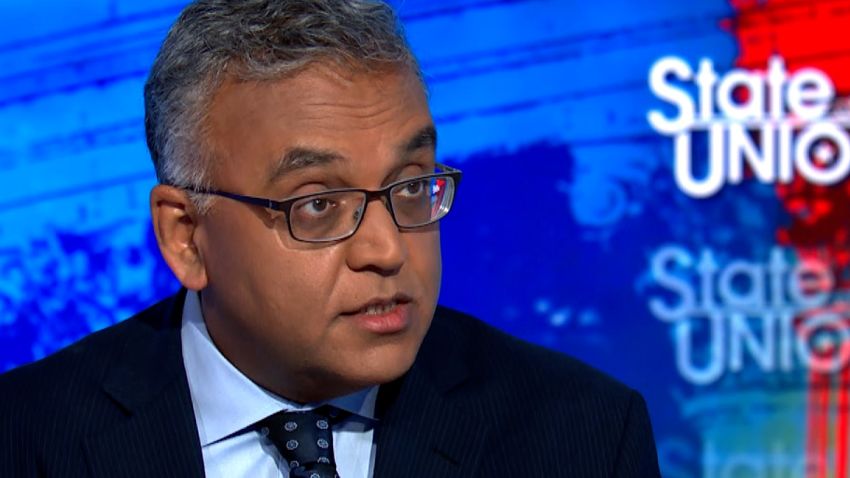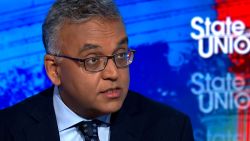A version of this story appeared in CNN’s What Matters newsletter. To get it in your inbox, sign up for free here.
“You don’t make the timeline, the virus makes the timeline.”
That was Dr. Anthony Fauci’s message for an anxious nation when the novel coronavirus first began to spread across the US. More than two years later, his words have new relevance in the face of a disturbing warning from the White House.
CNN’s Kaitlan Collins reports: The Biden administration is issuing a new warning that the US could potentially see 100 million Covid-19 infections this fall and winter, as officials publicly stress the need for more funding from Congress to prepare the nation.

The projection of 100 million potential infections is an estimate based on a range of outside models that are being closely tracked by the administration and would include both the fall and winter, a senior administration official told CNN. Officials say this estimate is based on an underlying assumption of no additional resources or extra mitigation measures being taken, including new Covid-19 funding from Congress, or dramatic new variants.
Dr. Ashish Jha, the White House Covid-19 response coordinator, confirmed the warning during an interview on ABC News Sunday, but stressed that “whether that happens or not is largely up to us as a country.”
“We’re looking at a range of models, both internal and external models, and what they’re predicting is that if we don’t get ahead of this thing, we’re going to have a lot of waning immunity, this virus continues to evolve, and we may see a pretty sizable wave of infections, hospitalizations and deaths this fall and winter,” Jha said.
Already, cases of Covid-19 are rising again. Infections have increased by more than 50% compared with the previous week in at least eight states. Parts of New York have moved into the “high” designation of Covid-19 community level, according to the US Centers for Disease Control and Prevention metrics.
But could the virus really infect 100 million Americans this fall and winter? We asked Dr. Syra Madad, an epidemiologist at NYC Health + Hospitals, about the White House’s warning and what it might mean for you. Our conversation, conducted over the phone and lightly edited for flow and brevity, is below.
WHAT MATTERS: What do you make of this warning from the White House?
MADAD: I think it’s an extremely important warning that everybody in the United States, whether you’re unvaccinated or vaccinated and boosted, should certainly take heed of because we’ve been in this rodeo before and we know what to do.
We have the tools and resources to protect ourselves and protect those around us. It’s important that people are aware that the risk level around them is increasing. And so there are things that you can do to reduce your risk of getting infected, and certainly having a severe outcome.
When we talk about severe outcome, we know that the Covid-19 vaccines are working and holding up really well against the most severe outcomes, which is hospitalization, ICU-level care and death. At the same time, we want to make sure that there’s also funding in place where pharmaceutical companies can invest in bivalent, multivalent Covid-19 vaccines.
WHAT MATTERS: Officials say the White House estimate is based on an underlying assumption of no additional resources or extra mitigation measures being taken. It sounds like you agree that additional resources would make a big difference?
MADAD: Oh, absolutely. I think the best part about these predictions is that they are predictions at the end of the day. There are models that are projecting what’s going to happen in the future, and we know that we have the resources and tools to change that future.
We can prevent – I would say by and large – that number, that amount of people getting infected. And I think that there’s a couple of questions and probably points of clarification that I’ll make on that 100 million number itself.
It’s unclear where they got that particular ballpark number of infections from – one can only predict it’s probably a combination of waning immunity in addition to obviously the Americans that haven’t even gotten fully vaccinated. We still have millions of Americans that have only had one dose. We have millions of Americans that haven’t even gotten one dose. And so it’s a combination of all of those factors, along with those that are immunocompromised.
What’s important is that there’s transparency where this number is coming from. I just laid out some of the factors that are probably going into this number, but it’s important that we do understand what are the factors that are coming into play in this model.
WHAT MATTERS: Most of the US is fully vaccinated, and a lot of people are exhausted from the last two years. How do you get people to pay attention to warnings at this point in the pandemic?
MADAD: It’s a great question, and we know pandemic fatigue is real and it has already set in here in the United States. We certainly are out of the acute phase of the pandemic, meaning that it’s not red sirens, even though we know obviously hundreds of Americans are still, unfortunately, dying every day, and thousands of Americans are still getting infected every day. And we know that’s certainly an underestimate.
But because this virus and this disease is much more manageable because of the tools that we have, people are much more complacent. And I understand that; we are going onto year three. People want to go back to enjoying the life that they knew before this pandemic.
At the same time, I think it’s just important that people realize we are still in a pandemic. As much as we don’t want to be in one, that is the reality. And it’s not just shaped by what’s happening here in the United States. It’s also shaped by what is happening around the world. And we’re seeing more and more of these subvariants pop up both here in the US as well as around the world. It’s just important that people realize that it’s not over until it’s over all around the world.
We need to just continue to be cautious. I think that we can do all the things that we love doing, but doing so in a safer manner, knowing that there’s much more virus in the community.
I think really understanding it from the standpoint of: You shouldn’t want to get infected. You shouldn’t want to get sick, even if it’s something that’s manageable. For me, I think it’s also the risk of long Covid. I’m not necessarily afraid of getting infected with the virus, even though I am still avoiding it. I am still masking in large indoor gatherings because I just don’t want to get sick. I am actually afraid of long Covid. I don’t know what the repercussions will look like in the long term.
WHAT MATTERS: What are the best metrics for people to pay attention to?
MADAD: So I would look at wastewater surveillance, which is an early indicator of telling you there’s something brewing in the community and cases are rising.
I would also continue to look at the CDC’s transmission level map. That kind of gives a good indication of where transmission levels are in your given community. And we know many places in the US are getting into that medium level of Covid-19 transmission, certainly here in New York City.
I still would want to know: Are hospitalization rates going up in my given community? Would there be a hospital available to me in the off chance I do get infected and I require hospitalization? But that’s more of a lagging indicator.
WHAT MATTERS: Anything else you’d like to add?
MADAD: The White House is in a very tough position. They are fighting for more funding. They’re making it very transparent that they are very concerned. They want to make sure that people understand that this is no joke.
That 100 million number is a very large number, and so it’s really important that Congress understands that we are still in the pandemic, even though a lot of folks have put the pandemic behind them. You know, we could go back very, very quickly to the state that we were in just a few months ago with Omicron, with significant numbers of Americans getting infected.
We don’t want to go back to that state, right? So we need to make sure Congress understands that this is really important for them to continue funding.



















